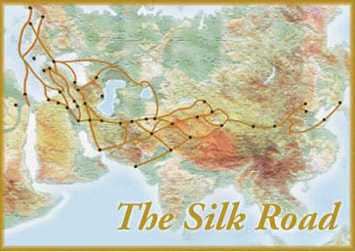In search of Longevity and Good Karma: Chinese Diplomatic Missions to Middle India in the 17th Century
-Tansen Sen
In his piece, In search of Longevity and Good Karma, Tansen Sen focuses on China’s diplomatic correlation with ancient Indian Kingdoms. Sen offers attention on these interactions because he feels China’s neighbours are rarely mentioned and are missing from pieces of China’s history. Focusing on the basis of the happenings between China and India, Sen examines the chain of Tang missions to Middle India, specifically in the seventeenth century.
Sen’s argues that the Buddhist monks residing in China facilitated the bond between both China and India. The Buddhist monks living in China visited courts of important Indian Kings which sustained the ties diplomatic ties. By examining the famous Buddhist pilgrim, Xuanzang, Sen argues that individuals and their own personal motives also helped sustain the ties between China and India. Xuanzang established a pilgrimage to India which leads to his meeting with the Indian King. The meeting inhibited the Indian King to send an envoy to tang Chins. Throughout his adventures, Xuanzang collected Buddhist texts from Indian monasteries and brought them back to China. Xuanzang’s actions suggest he looked to integrate both countries. Sen also focuses on the third Tang mission to Middle India which brought Indian-life prolonging technology, knowledge and expertise to China. It was from India that China gained the skill of healing and medicine. Sen’s final reference to proving the integration between China and India remains in the military alliance of China and the Indian Kingdoms. Receiving threats from the Tibetans and Turks, the borders of China and India became allies in order to have a strong military front and protect their people.
Ultimately, in his piece, Sen is uncovering the missing pieces in Chinese history, where the ancient Kingdoms of India are found. Sen gives credit to the Indian Kingdoms by revealing their ties and influences to China. Sen accomplishes this by looking at the most validating interactions between China and India. I believe that Sen is trying to give the ancient Kingdoms of India recognition for their influences. I feel that because many pieces of history did not reference the Indian Kingdoms, Sen went against the norm of what historians studied and brought something new to the field of religious studies. What Sen brings to the field of religious studies is a new way to look at Chinese history in the seventeenth century. Sen also brings the histories of the ancient Indian Kingdoms to the surface for scholars to indulge themselves in. Instead of looking for histories that have already been examined, Sen went against the norm in a quest to uncover something that was missing from historical accounts.

No comments:
Post a Comment